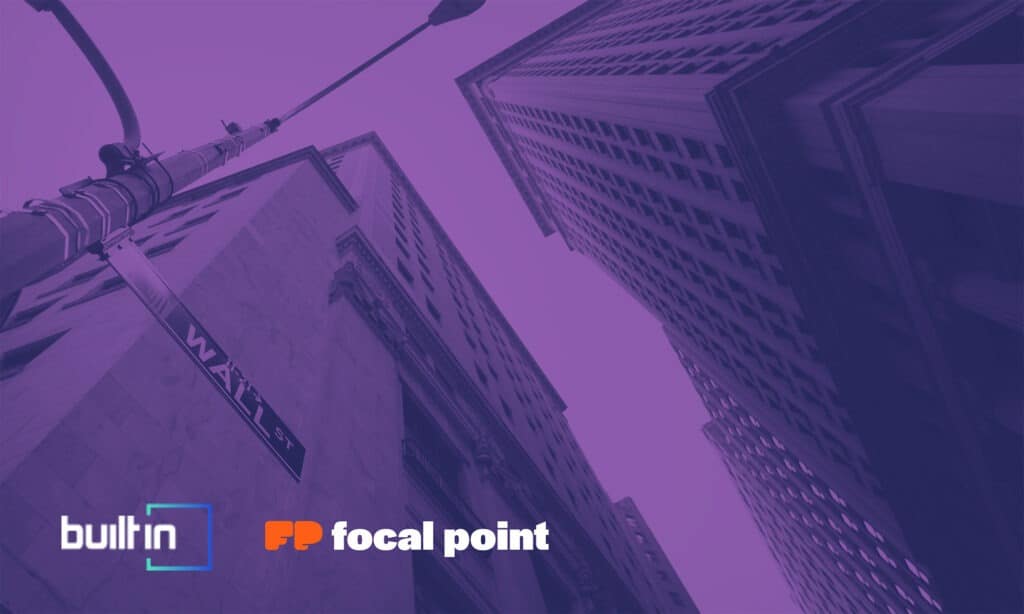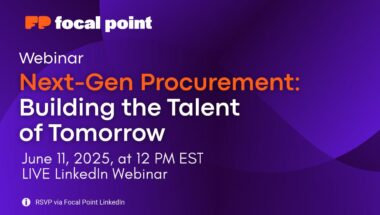Selling your product to a Fortune 500 company takes a little more legwork on the front end, but the rewards are worth it. Our expert explains his process.
For early-stage B2B SaaS startups, your first hurdle is to establish product-market fit and sign your first customer. But if you’ve done all that, the next hurdle comes when you begin to scale, move up market, and sign your first Fortune 500 customer.
Selling to larger enterprises requires an entirely different skill set than smaller ones. Your product often needs to be tweaked and tailored to suit the needs of these larger organizations. Also, the sales process is longer. It often takes well over a year to close larger enterprise deals, according to SaaStr. Although getting the deal over the finish line can be a slog, the benefits are massive.
At Focal Point, five of the first 10 deals we closed in our first two years were with Fortune 500 companies. So, how’d we do it?
Having a quality product that solves a real problem is step one. Beyond that, though, the thing that will help you rise above your competition is how you continue to communicate your value.
4 Steps to Closing a Fortune 500 Company
- Don’t skip over the basics: customize!
- Pitch the right person. Understand their role.
- Be clear about the problem you’re solving.
- Be ready to hear “no” in an extra-long sales cycle.
MORE IN SALESHow to Win Over Gatekeepers and Close More Deals
1. Don’t Skip Over the Basics: Customize!
When meeting with Fortune 500 professionals, your instinct may be to default to high-level, sometimes jargon-y marketing language.
They’re being pitched dozens of times daily; don’t waste their time with generalities. Get to the point and customize your pitch to their unique set of problems. Tailored pitches require consistent, customized communication, guiding your lead throughout the process. It works: Nurtured leads make purchases 47 percent larger than non-nurtured leads.
Nurturing your leads can start before you even pitch them. Are you connected on LinkedIn? You can build trust and authority by becoming a thought leader in your niche. Are you talking about the problems they encounter every day? Make the lead even warmer by setting yourself up as a thought partner and ally rather than one more solution in a sea of them.
The truth of the matter is that there are only 500 Fortune 500 companies. You have no excuse for not knowing every target intimately, crafting unique selling points for each one, and offering an unparalleled level of service.
Selling to public companies can actually be a straightforward process. They have to disclose performance, and you can turn their disclosures into value propositions if you read between the lines and do your homework.
For example, If one of your targets discloses goals related to sustainability, make sure to angle your pitch toward the ways your product or service helps reduce environmental impact. For instance, in our case, Focal Point helps identify more sustainable, compliant vendors, vastly improving the environmental health of the company’s supply chain overall. If your company offers a cleaner technology or a more efficient use of resources, these could be compelling points of interest for leaders on the receiving end of your outreach.
The ABCs of sales are “always be closing,” but perhaps just as important is ABL: “Always be learning.” Always be learning about your customers, incorporate their feedback into your pitch, and stay in front of them with consistent, customized communication.
For example, if you walk them through a demo, be very intentional about what you show them. Your dummy data needs to be a realistic representation of what you think your prospects see and feel every day.
To maximize the effectiveness of your demos, prepare scenarios that might occur in their industry. For example, if sudden market changes are common in their industry, show how your tool can quickly adapt to provide new insights or alter workflows.
It needs to be familiar, highlight that you understand their problems, and that can solve them from day one. And, if you can’t solve all of their exact problems from day one, assure them you’ll have a path to build the required product features quickly.
2. Pitch the Right Person. Understand Their Role.
Although customizing your pitch to a company is crucial, don’t stop there. Customize it to the person. Finding the right person to pitch can be everything.
For example, Focal Point is a procurement solution. If we had started engaging Fortune 500 companies by pitching their COOs, we’d have gotten nowhere. Instead, we started with procurement professionals at the mid- to senior-level: Heads of procurement, chief procurement officers, etc.
Once you’ve found the right person, start to understand the nuances of their role. A head of procurement is likely facing different day-to-day issues than a chief procurement officer, and a chief procurement officer at one Fortune 500 company could have very different responsibilities than the same one at another.
We rely heavily on testimony from our existing clients to make this happen. We ask our clients pointed questions to understand the internal dynamics at play. Although not every client is the same, if you ask enough questions, you begin to understand the patterns in the answers. This helps us inform who we go to first.
When we pitched procurement professionals at Fortune 500 companies, we wanted to create an evangelist for our product on the inside who understood the problems we were solving and could be an internal champion for our solution.
We tailored our pitches to them because they were the first and most important gatekeepers, but the work doesn’t stop there. You should also understand that no one in any function works independently. Work to understand the needs of, and sell to, the other stakeholders who need to buy in: the CTO, CIO, CFO, and in some cases CEO. Even with a champion on the inside, you have to speak the language of the decision-making C-suite.
As we spoke to more stakeholders throughout the process, we again tailored our conversations to those audiences. You accomplish this by analyzing your audience and their needs. If we’re pitching to a chief procurement officer, we tailor our pitch to introduce the product as a solution that simplifies procurement processes, reduces costs, and enhances supplier management. But, when we’re talking to the CFO, we highlight the cost-effectiveness, ROI, and impact of our product on the bottom line. The process will evolve, and your pitches can’t be stagnant.
3. Be Clear About the Problem You’re Solving
Companies that undersell a problem and oversell their solution are doing themselves a disservice. They’re setting customers up to be underwhelmed.
Instead, start with the problem first. This means positioning your product around a discrete problem. It’s not the solution to all their problems. It’s not their savior. It solves a specific issue they experience regularly, and it does so elegantly.
This type of transparency builds trust. Our customers appreciate the candor; they understand that procurement is complex and messy. It takes time to address the process end-to-end, which is why incremental improvements are so important.
Strive to communicate to prospects how your organization will tackle the team’s future problems. The sales team has an opportunity to demonstrate its expertise and vision to grow with the company by anticipating future challenges and a plan to address them.
To use the example from above, if our client has expressed an intent to prioritize sustainability, we emphasize that our team is actively developing features that will help them evaluate suppliers not just on cost and quality, but on their environmental and social governance standards.
Laying out a plan from start to finish and acknowledging that you’re prepared to pivot along the way brings customers into your journey, makes them feel like stakeholders, and gives them input into the vision for your solution.
4. Be Ready to Hear ‘No’ in an Extra-Long Sales Cycle
This one sounds counterintuitive, but that’s precisely what makes it effective. Prompt buyers with questions that require a “no.” For example, “Do you have [insert your unique value proposition]?” You know the answer. They know the answer. It’s “no.”
But just the act of them saying that they don’t have a solution out loud requires them to really focus on the issue at hand. It’s almost cathartic. Let the “no” resonate with them. Let them sit in it.
Sometimes the “no” can be unnerving. For example, “You’ve seen the value our solution can bring, but are your teams set up to access that value from day one?”
Sometimes that’s a “no” as well, and while that can be unsettling for you as the salesperson, it forces you both to think through the logistics. Your goal isn’t just delivering the best tech, it’s to find the best way to organize, train, and deploy their teams around that tech. This is where you think through onboarding, training, legacy systems, bureaucracy, etc.
This thought exercise forces your target to imagine what a partnership would look like. They have to get specific and prescriptive. They need to figure out both what they need from you and what you’ll need from them.
In many cases, “nos” are the best path forward in an extra-long sales cycle.
Prep, Then Sell
We signed five Fortune 500 clients in our first two years. It wasn’t easy. But we made our lives a lot easier by going into each call armed with the knowledge that we were talking to the right person, at the right company, with the right problem statement, and with the right amount of transparent honesty.
Now, that’s not going to work for every B2B SaaS company. You have to get the problem statement and product down first. But once you do, it’s off to the races.



